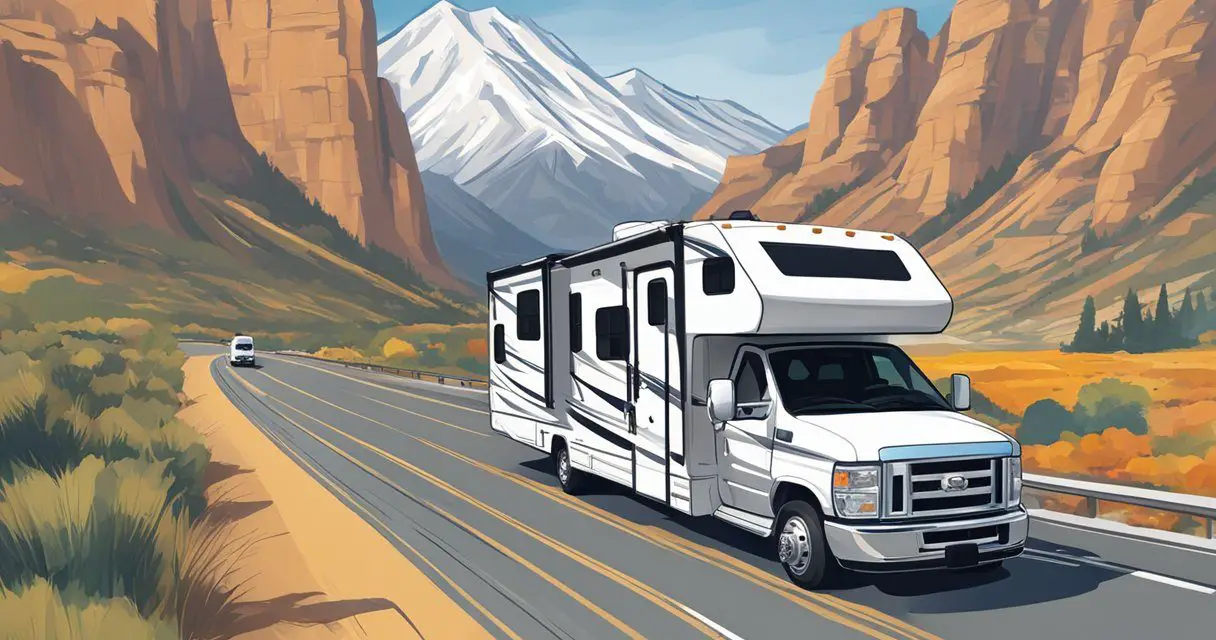Would you like to save this article?
Planning a road trip in your RV can be an exciting adventure, but the costs associated with fuel consumption can add up quickly. Understanding how to improve your RV’s fuel efficiency not only helps save money but also enhances your travel experience. Learning a few tips to boost your gas mileage can make a significant difference.
With so many factors affecting your RV’s gas mileage, it’s crucial to consider various methods that can optimize fuel consumption. These strategies can lead to substantial savings on long journeys. Taking the time to implement these tips could make your trips more economically efficient and environmentally friendly.
Understanding Fuel Efficiency
Fuel efficiency is vital when driving an RV, especially given rising fuel costs and the environmental impact of fuel consumption. Key factors affecting gas mileage include the RV’s design and additional variables such as weight and maintenance.
What Affects Gas Mileage?
Several factors play into your RV’s gas mileage. Weight is crucial; every extra 100 pounds can reduce efficiency by about 2%. This makes packing thoughtfully important. Proper tire pressure also impacts fuel economy. Under-inflated tires create greater rolling resistance, demanding more fuel.
Driving habits can’t be ignored. Accelerating quickly or driving at high speeds increases fuel consumption. Instead, practice smooth accelerations and maintain moderate speeds. Aerodynamics can affect mileage too. Removing roof cargo and closing windows reduces wind resistance.
How RV Design Impacts Efficiency
The design of your RV significantly influences its fuel efficiency. Diesel engines usually offer better mileage compared to gasoline engines. They are more fuel-efficient, getting around 7-12 MPG, while gas engines average 6-10 MPG. Aerodynamics play a role here as well. Models with a more streamlined shape tend to perform better.
Size and weight are also design considerations. Larger and heavier RVs need more energy to move, reducing efficiency. When choosing an RV, consider opting for lighter and more aerodynamic designs. Also, be aware of onboard systems like air conditioning, which can increase fuel consumption when in use.
Here are 5 tips that can help you save gas:
1) Keep your tires properly inflated
Keeping your tires properly inflated is a simple yet effective way to boost your RV’s gas mileage. When your tires aren’t inflated to the right level, they create more resistance against the road. This resistance makes your engine work harder than it needs to, using more fuel.
Always check your tire pressure regularly. You can find the recommended pressure for your tires in your RV’s owner manual or on a sticker located on the driver’s side door jamb. Keeping them at this level is crucial for maximizing fuel efficiency and maintaining a smooth ride.
Driving with properly inflated tires isn’t just about saving fuel; it also means safer travels. Properly inflated tires handle better and can prevent uneven wear, which extends the life of the tires. It’s a win-win for both your RV’s performance and your wallet!
2) Reduce Excess Weight by De-cluttering
Your RV has a lot of space, which can easily get filled with stuff over time. Take a moment to look around and see what you really need. Every extra pound your vehicle carries can reduce fuel efficiency, so it’s worth spending some time lightening the load.
Start by removing items you haven’t used in months. They might seem small, but they add up quickly. Consider storing non-essential items at home or in a separate storage unit. This can make a noticeable difference in your gas mileage.
Think about unnecessary heavy items as well. For instance, if you have removable seats or bulky equipment onboard, reevaluate if they are truly needed for your trip. Getting rid of excess weight can help you save money on gas, making your journeys more enjoyable and less costly.
3) Use cruise control on highways
When you’re hitting the open road with your RV, cruise control can be your best friend. It helps maintain a steady speed, which often improves fuel efficiency by reducing unnecessary acceleration and deceleration. This is particularly useful for long highway stretches where traffic is light.
By using cruise control, your RV’s engine doesn’t have to work harder than necessary, which can help save fuel. Consistent speed can provide a smoother ride, allowing the transmission and engine to operate more efficiently. This can lead to noticeable fuel savings over a long journey.
Keep in mind that cruise control works best on level ground. On hilly terrain, it might not be as effective since your vehicle may need more power to climb and then slow down on declines. On flat highways, though, it’s a handy tool for maximizing gas mileage.
4) Plan your route to avoid traffic
Planning your route before hitting the road can make a big difference in your RV’s gas mileage. Long stretches of stop-and-go traffic can use a lot of fuel, so it’s smart to avoid congested roads whenever possible.
Use a GPS or a traffic app like Waze to scope out traffic patterns in advance. These tools can help you find the most fuel-efficient path and steer clear of busy areas.
Consider driving during off-peak hours when roads are less crowded. Early mornings or late evenings are often ideal times to travel, helping you maintain a smoother journey and reduce unnecessary fuel consumption.
Combining multiple errands or stops into one trip can also help. This minimizes backtracking and keeps your travel more efficient, saving you both time and gas.
5) Perform regular engine maintenance
Keeping up with your RV’s engine maintenance is key to getting better gas mileage. Simple tasks like changing the oil can make a big difference. Oil changes are vital and should be done at regular intervals, just like you would for a car, depending on whether your engine is gas or diesel.
Checking and replacing air filters is another quick win. A clean air filter allows your engine to breathe better, improving efficiency and mileage. It’s an easy fix but often overlooked.
Don’t ignore the spark plugs, either. Worn-out spark plugs can cause your engine to misfire, which wastes fuel. Make it a habit to check and replace them as needed.
Your RV’s oxygen sensor is another component worth monitoring. A faulty sensor can decrease your fuel efficiency by as much as 40%. Regular checks ensure everything runs smoothly.
With these maintenance steps, you’ll keep your RV in top shape, driving more miles on a tank and saving money at the pump.





